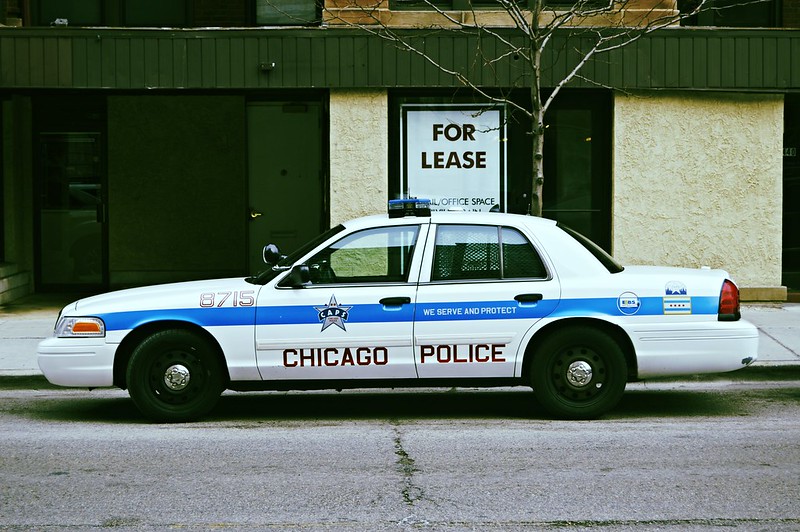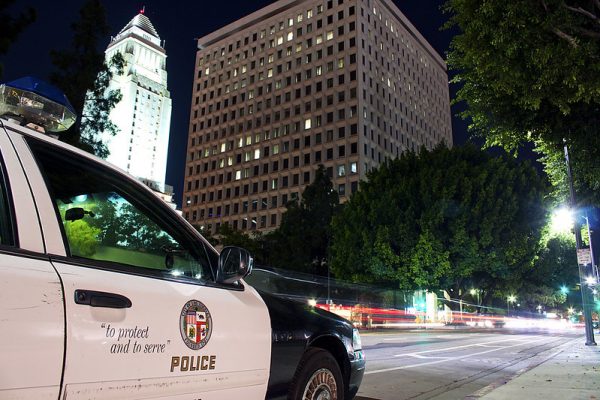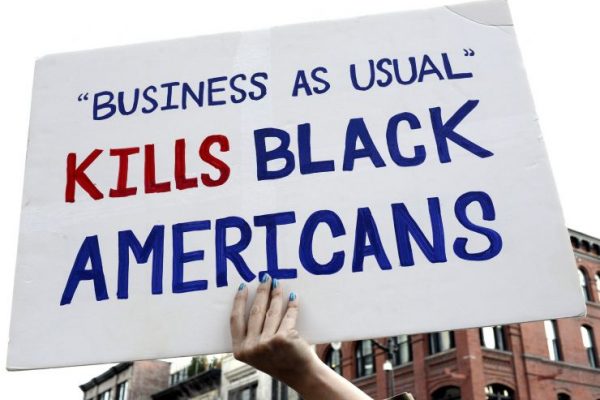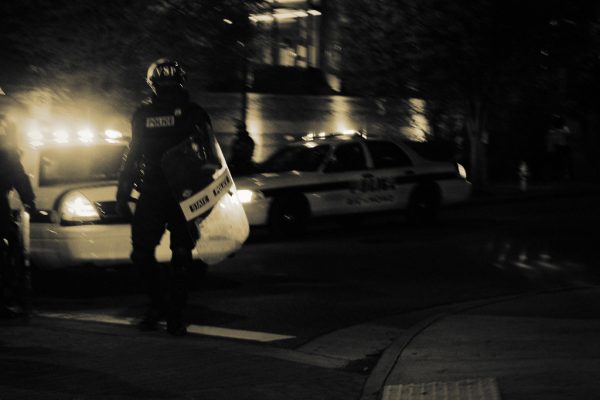The Torture Letters: Reckoning with Police Violence
Laurence Ralph
University of Chicago Press, $19 (paper)
The murder of George Floyd two weeks ago by Minneapolis police officer Derek Chauvin has sparked massive global protests. The unrest has been fueled in part by the sheer brutality of the crime, caught on cell phone video that makes Chauvin’s cruelty plain for all to see. The flood of video images in recent years of African Americans killed at the hands of the state, from Eric Garner to Tamir Rice, has broadcast the horror of anti-black violence in the United States. But reckoning with the scale of police brutality also requires confronting state violence that escapes the cell phone camera’s lens. One of the most insidious examples of such violence is Chicago’s decades-long history of police torture, the subject of Laurence Ralph’s powerful new book The Torture Letters: Reckoning with Police Violence.
Reckoning with the scale of police brutality also requires confronting state violence that escapes the cell phone camera’s lens. One of the most insidious examples is Chicago’s decades-long history of police torture.
Between 1972 and 1991, Ralph details, approximately 125 suspects—a conservative estimate, and almost all of them black men—were tortured in closed interrogation rooms at Chicago’s Area 2 detective headquarters. Officers working under the direction of police commander Jon Burge employed a range of unconstitutional tactics to elicit confessions from suspects or to punish them after they confessed; suspects endured beatings, third-degree burns, suffocation, and electrocution. Speaking before a jury in February 1989, Andrew Wilson described his torture at the hands of four Chicago police officers: “The pain just stays in your head.” It was Wilson’s testimony that helped bring Burge’s nearly twenty-year “reign of terror” to a close. In the decades that followed, public interest lawyers, activists, and investigative journalists continued to bring new evidence of police torture to light. In 2009, under pressure from torture survivors and community groups, the state created the Illinois Torture Inquiry and Relief Commission, which receives claims by anyone in Chicago whose convictions rested on confessions coerced through torture. More than 400 cases still await investigation.
The scandal of Burge’s crimes is not just that they happened at all, but that our norms and institutions, even our language, invite us to cast Burge’s record as an exception—a horrific and regrettable, but isolated, chapter in the history of Chicago policing. As the communities of color that experience police brutality firsthand insist, the most violent and fatal encounters—and these too, it hardly needs stating, are many—cannot be understood apart from the daily injustices suffered at the hands of the state. Yet the systemic quality of racial violence is easily obscured by a robust regime of metaphor. We read of “villains” and “monsters,” “devils” and “rogues,” “bad guys,” and “bad apples.” The scandal of our language is that the alibis are endless. What is the name for a collective that stands accused? For a state that has run up its debts?
Those are among Ralph’s animating questions. An anthropologist at Princeton and co-director of their Center on Transnational Policing, Ralph is a detective less in search of new evidence of police torture—everything he discusses is in the public record—than of a language that might clarify its logic: how it took root, how it went on as an open secret, known by everyone from prosecutors to elected officials, and how those most immediately responsible largely avoided facing criminal charges. (Burge eventually served slightly less than his four and a half year sentence on perjury and obstruction of justice for denying the abuses in a civil lawsuit.)
As the title suggests, Torture Letters is written as a series of open letters from Ralph to individuals and communities with a stake in Chicago’s extensive history of police torture: mayors and police superintendents, police officers, black residents of the city, young activists, late civil rights leaders, victims of police violence, torture survivors and their family members, and, finally, the reader. With each story of police abuse, Ralph lays bare and then challenges the commonsense thinking that helps make police violence endemic. He begins with Wilson’s story in part because he was the first to file a lawsuit against the city for the crime of torture, bringing the abuse to wider notice.
The scandal of Burge’s crimes is not just that they happened at all, but that our norms and institutions, even our language, invite us to cast Burge’s record as an exception.
But Wilson’s story bears rehearsing for other reasons as well. Wilson was arrested in 1982 on suspicion of killing two police officers—a crime for which he was later charged, and for which he served a life sentence until his death in 2007. All evidence suggests he was guilty. For a long time—and for the juries that heard the first two civil trials Wilson pursued (he won his case with the third)—this seemed to justify the beating, the burning, and the electroshocks he received when he was brought to Area 2 headquarters for questioning. Police officers could be forgiven, and they were, for lashing out at a suspected cop killer or for doing what they could to elicit a confession. But as Ralph states unequivocally and repeatedly: the question of Wilson’s guilt or innocence has nothing to do with his right not to be tortured, guaranteed in the Constitution if not in our moral imagination. We are awash in stories of the wrongfully accused and the exonerated. But what of the guilty? Why, Ralph asks, should police torture only disturb us when it coerces a false confession?
At work, it seems, is a logic that accommodates guilt and innocence only in extremes—that demands Wilson be innocent of all crimes to be worthy of what he is owed, namely his rights, much as it demands we view Burge as guilty only to the extent that he is an outlier, an example of the very worst among us. To challenge the latter impulse, Ralph addresses several of his letters to police officers who worked in Burge’s precinct, knew what was going on, and did little to stop it. These include African American officers whose already marginalized status within the precinct meant that speaking up posed even greater risks to their careers and livelihoods. Ralph writes to one such retired police sergeant, Doris Byrd:
As far as I can tell, you were screwed no matter what you did. I have often wondered what your daily life at Area 2 looked like. Did you leave the break room whenever Burge came in? Did you make small talk with him? Did you wait to see which cases he was assigned to, then ask for different assignments? It seems that the anxieties of working in this environment—not to mention the corrosiveness of torture itself—prevented many of you from becoming the kind of cops you wanted to be. Not because you participated in this brutality, but because the other options available to you were also fraught with peril.
Ralph’s point, then, is not so much to blame those officers as it is to suggest that the institutional culture that made silence the best response to wrongdoing will not have been eradicated simply with Burge’s departure. In this regard, Ralph finds particularly troublesome remarks by the current Chicago Police Department superintendent Eddie Johnson who, upon taking up the role in 2016, said in his acceptance speech, “The countless incidents of courage and professionalism far outweigh the few examples of excessive force.” As Ralph is at pains to insist (and, again, it would seem to hardly need stating): incidents of police violence are neither few nor isolated.
Equally compelling are sections of the book exploring the transnational dimensions of U.S. policing, and, in particular, the documented links between the use of torture at home and its use abroad. These are linked not just rhetorically or ideologically but by concrete materials, techniques, and personnel. Lawyers for a number of torture survivors allege that Burge brought back from his service in Vietnam the “black box” he would use to torture residents of Chicago. Burge likely witnessed the use of the device, a portable military telephone refashioned to deliver electric shocks, to torture suspected members of the Viet Cong. (The device itself was destroyed. Burge is rumored to have thrown it into Lake Michigan from his boat, named Vigilante.)
The links do not end there. In 2002 the U.S. Army recruited Chicago detective Richard Zuley to Guantánamo Bay. Known for his “knack for getting confessions,” Zuley rose through the ranks of the police department before taking over the interrogation of suspected terrorist Mohamedou Ould Slahi. Slahi would later become known for publishing his Guantánamo Diary (2015), which named Zuley as his torturer. Zuley’s name may never have come to light in this context save for its mention in a footnote that slipped past government redactors. This led reporters to investigate Zuley’s career and uncover his history of torture within the Chicago police force. Efforts to keep his name classified might have been thwarted anyway: in 2014 Zuley left an Amazon review for a novel called Killing Sharks about a Lieutenant Commander at Guantánamo named Grant Chisolm. Zuley hailed the work as “fiction that could easily be fact,” and, presumably to qualify this assessment, signed his name followed by “senior interrogator and Special Projects Team Chief, Joint Task Force — Guantánamo (2002–2004).”
Ralph punctuates his account with excerpts from his own conversation with Slahi. Abducted from his home in Mauritania and held at Guantánamo for fourteen years without charge, Slahi tells Ralph, “I thought guilty meant that you did it, or didn’t do it. But guilt . . . in my experience with the U.S. is not like that.” Slahi’s story might serve as a warning: that we turn a blind eye to torture abroad to the peril of fellow citizens and, conversely, we ignore it at home to the peril of strangers abroad. The same strategy of containment that casts Burge as an outlier would likewise have us isolate instances of torture as something that happens only over there. But we might also state the lesson a little differently. Though some may wish to see torture as the work of uniquely ruthless individuals with little in common beyond their brutality and sadism, Ralph’s account clearly demonstrates that U.S. terror tactics are not invented each generation anew. Rather, as they did for the European empires of the nineteenth and twentieth centuries, techniques of racialized brutality move from one outpost to the next: terror boomerangs from Vietnam to Chicago to Guantánamo and back. As Ralph argues, it may well be true that Zuley was “sick,” as some have suggested. But this diagnosis evades a more uncomfortable reality: that his success in Chicago made him a promising recruit in the War on Terror.
In its causes and consequences police torture relies on and affects a network of actors, not single authors and single victims, observed through the one-way glass of an interrogation room.
Where Ralph faults the institutional responses to police torture, he finds ample inspiration in the work of activists. In 2014 a group called “We Charge Genocide” traveled to Geneva to present their case before the United Nations Committee Against Torture. The organization took its name from a 1951 petition submitted to the United Nations by the Civil Rights Congress. The petition documented the murder of over 150 black men and women at the hands of law enforcement or lynch mobs between 1945 and 1951. Sixty-three years later young activists, galvanized by the murder of Dominique Franklin, who died at age twenty-three after Chicago police used a Taser on him, again made the case before the UN that police torture and other forms of state-sanctioned racial violence constitute genocide. In response, U.S. delegates acknowledged that there had been a spike in incidents of torture after 9/11, but these took place largely overseas and the Department of Justice had now prosecuted those responsible. After hearing evidence from We Charge Genocide, members of the Committee Against Torture challenged this narrative. As one member said, “The US’s story seems to be: there was a laudable beginning, and then we strayed for a little, but we are getting back on track now. However, the fact remains that a number of breaches have occurred in between.”
On the local front, Ralph credits activists with winning the landmark Reparations Ordinance, passed by the Chicago City Council in 2015. The ordinance created the first ever reparations fund in the U.S. for victims of police torture; it provides victims with cash payouts, free tuition at the city’s community colleges, job training, and free access to mental health services. The law also required the city to publicly acknowledge and condemn police torture, erect a monument for survivors, and add a lesson about Burge and his crimes to the public school’s history curriculum.
While the state had previously offered large cash settlements to torture survivors, the significance of the Reparations Ordinance was to frame questions of guilt and accountability in an entirely different manner. First, unlike previous settlements, the Reparations Ordinance does not require victims to prove that confessions coerced through torture were false, that is, that they were innocent of the crime to which they had confessed. Second, while earlier settlements compensated individuals, the ordinance frames compensation in far more expansive terms: as a contract whose benefits accrue to the city as a whole, and which goes beyond strictly monetary recompense. In addition, where previous settlements understood the city’s debts to victims to be settled once victims receive their compensation, the Reparations Ordinance sets up a more open-ended contract by, for example, requiring public schools to continue to teach the history of police torture.
In short, the ordinance calls for a more capacious vision of the state’s debts. Much more has been taken from Jon Burge’s survivors, and much more is owed. As Mariame Kaba, an organizer who both co-founded We Charge Genocide and worked to pass the reparations law, writes, “The ordinance was conceived as a living memorial. It is an abolitionist document that asks us to imagine and enact different forms of justice.”
How we talk about torture—indeed, whether we talk about it at all—hinges, inescapably, on the language at our disposal. Literature has long marked the limits of language in registering physical pain. In this context, Elaine Scarry writes, the horror of torture lies in the way it magnifies the felt experience of pain, bestowing “visibility on the structure and enormity of what is usually private and incommunicable, contained within the boundaries of the sufferer’s body.” The signs of Wilson’s torture, Ralph writes, “were written on his flesh.”
Attention to structure teaches us that little in this life happens by accident or without design, that even lawlessness follows the law.
But describing the scandal of police torture poses a more acute challenge. Torture, in this context, makes visible not only private pain but the horror of systemic anti-black violence. As Ralph writes, for the black residents of Chicago he spoke with, “torture is a plot point somewhere between mistreatment and death, which is to say that it’s inseparable from the wider spectrum of police use of force upon which it resides.” Ralph’s challenge is to give expression to the phenomenon of police torture, and to do so within a language that so often and so readily fails to accommodate the structural quality of violence. “A strict historical approach, or a policy-oriented approach,” Ralph writes, “doesn’t actually clarify the full extent of the problem. To do that, we need not facts but a metaphor.” To that end, Ralph experiments with a series of metaphors intended to make knowledge of structure real: torture is a tree firmly planted in Chicago—whose “roots are deep, its trunk sturdy, its branches spread wide, its leaves cast dark shadows.” Burge’s “black box” becomes a metaphor for how the mechanisms of police brutality are obscured. The “use of force continuum,” the name for the response standard employed by law enforcement, becomes a broader description of the range of tactics the state uses to terrorize black bodies—torture being only a point on the extreme end.
If the roots of torture lie deep within the city’s soil, the epistolary form of Ralph’s book further dramatizes his argument that guilt and responsibility are distributed well beyond the walls of Area 2 headquarters. The punctuated appearances of “you” remind us that in its causes and consequences police torture relies on and affects a network of actors, not single authors and single victims, observed through the one-way glass of an interrogation room. The direct address also forces a gesture of humility. Even when Ralph writes to those he disagrees with, he cannot simply dismiss their arguments outright. Perhaps most importantly, the form of the letter, as Ralph explains in an appendix on his method, has the effect of transforming the “subjects” of his study into the intended audience. The focus of his writing always returns to the communities impacted by police brutality. He cannot pretend, as he writes, to have “discovered” anything those communities do not already know.
What happens when police torture is no longer understood as exceptional—that is, once we locate torture on the use-of-force continuum? Weeks after entering office in 2009, President Barack Obama announced his plans, still unrealized, to close the detention center at Guantánamo Bay. “Without exception or equivocation,” he said, “the United States of America does not torture.” The force of the statement was normative, not descriptive: the U.S. did torture, but it ought not to. What police torture magnifies, beyond the private experience of pain, is the disjuncture between the forms of violence many of us accept and those we claim to disavow.
Torture delivers pain in a manner so planned and methodical, so deliberate and brazen, as to be unequivocally denounced. By contrast, injuries resulting from the frisk, the Taser, the tear gas, the rubber bullet, the real bullet, the chokehold, the knee pressed against the neck are chalked up to accident, to murder in the third-degree: “the unlawful killing of a human being, when perpetrated without any design to effect death.” Attention to structure teaches us that little in this life happens by accident or without design, that even lawlessness follows the law. Seen in the long shadow cast by the crime of torture, the deliberate nature of police violence becomes impossible to deny. The charges are outstanding.









